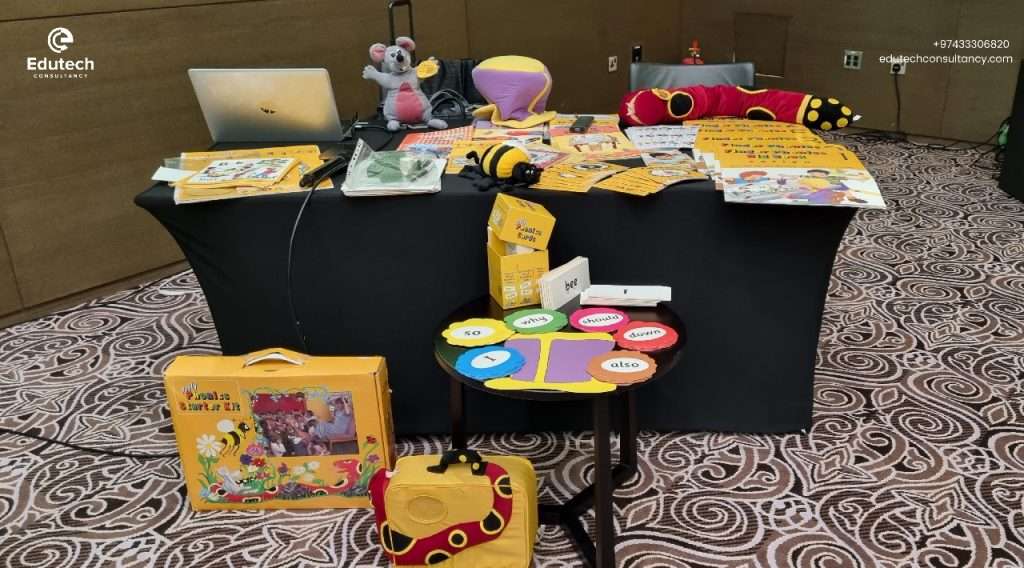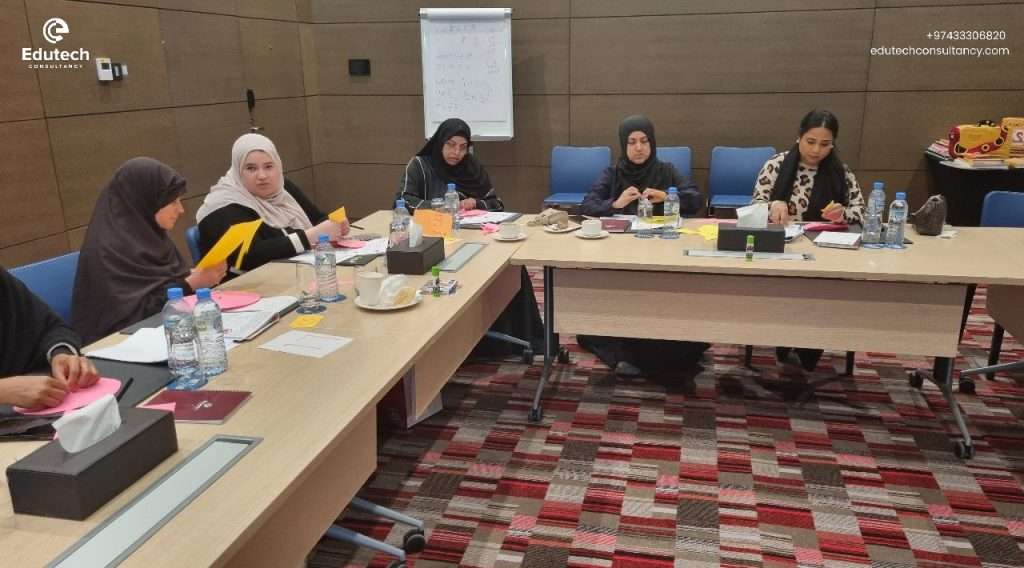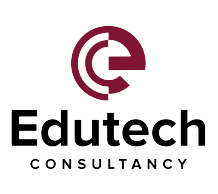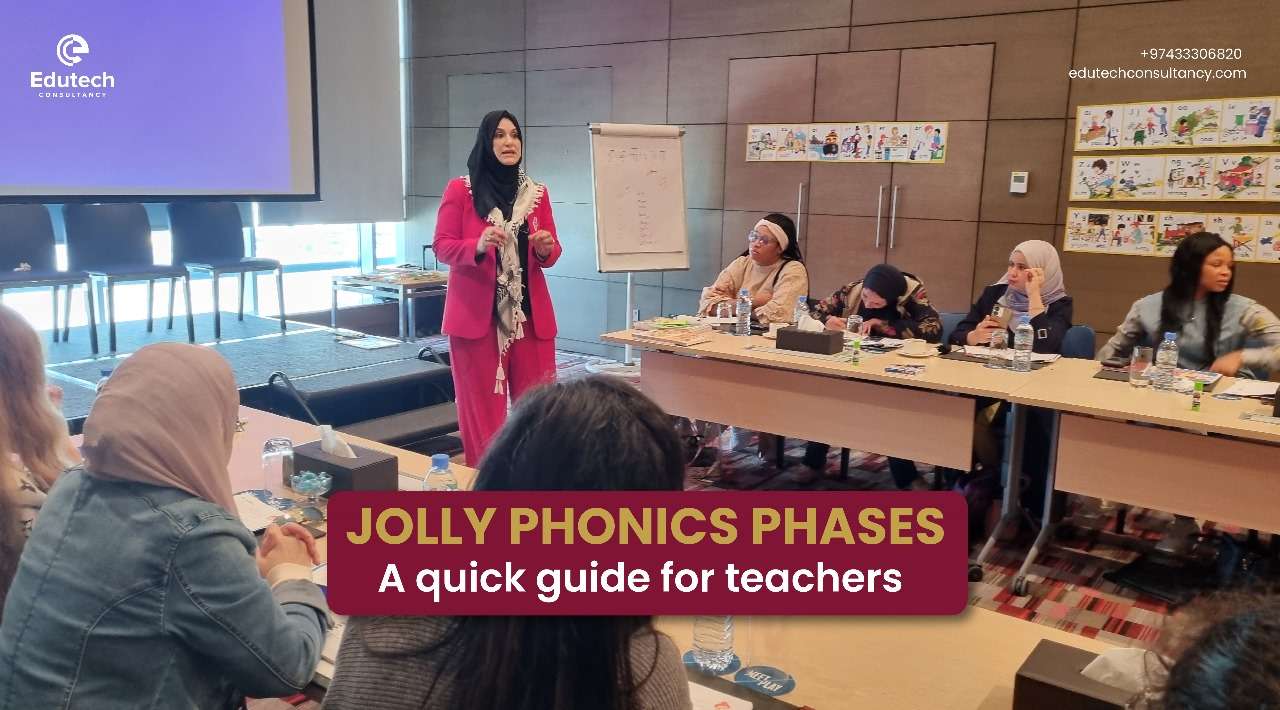Introduction
Teaching structured literacy skills is an essential component of early learning. The importance of teaching literacy skills in an engaging way is the best approach a teacher can follow. Jolly Phonics has emerged as one of the most effective Phonics teaching methods specifically in early childhood education.

Jolly Phonics is a structured phonics teaching approach. Therefore, this blog will give you a quick overview about the phases of Jolly Phonics learning. This approach benefits students in many ways. Firstly, systemic teaching ensures students learn to read and write successfully. Secondly, learning these skills makes them confident in their literacy journey with retention of knowledge that helps them for a lifetime.
What Are the Phases of Jolly Phonics?
Phonics learning is an important component when we talk about early reading instructions. Therefore, these instructions should be such that they teach the child the relation between sounds and letters in a way that helps them retain the skills and knowledge for longer.
The Jolly Phonics approach splits this process of Phonics learning in six different phases. Consequently, these discrete phases help the child to acquire and build knowledge together in each distinct phase. And hence makes them successful readers and writers.
Phase 1
Phase 1 builds the foundation of phonics instruction and it is part of the nursery or kindergarten curriculum. It lays the base for future learning by focusing on:
- Sound Discrimination
- Rhymes
- Oral blending
- Oral segmenting
Examples:
- Sound differentiation:The difference between the ‘s’ sound in, ‘sip’ and the ‘sh’ sound in ‘ship’
- Word rhymes: ‘bat’- (Mat, hat, cat)
- Oral blending: ‘Can you say the word ‘fog’ (F-o-g)
- Oral segmenting: ‘What are the sounds in the word ‘fig’- (F-i-g)
Phase 2
Phase 2 is about the first set of phonemes (sounds) and helps the children learn to blend these sounds together to read simple words. It is an important phase for developing early reading skills.
Examples:
- Phonemes: ‘s’, ‘a’, ‘t’, ‘i’, ‘n’, ‘p’, ‘h’, ‘b’, ‘m’, ‘d’
- Words: ‘sat, tin,’ ‘pan,’ ‘hat,’ ‘bed’
Phase 3
Phase 3 expands the phonemes taught in Phase 2, introducing digraphs (two letters making one sound) and trigraphs (three letters making one sound).
Examples:
- Digraphs: ‘sh’, ‘ch’, ‘th’, ‘ck’, ‘ee’, ‘oo’, ‘ai’, ‘oi’
- Trigraphs: ‘igh’, ‘ear’, ‘air’
- Words: ‘ship,’ ‘chair,’ ‘think,’ ‘book,’ ‘rain,’ ‘coin’
Phase 4
Phase 4 focuses on teaching children to read and spell words with adjacent consonants and polysyllabic words.
Adjacent consonants are consonants that appear next to each other in a word.
These consonant combinations are often challenging for young readers because only the blending of multiple sounds together makes the pronunciation of words accurate.
Syllable is a unit of word pronunciation with a vowel sound. Words having more than one syllable are called Polysyllables. .
Polysyllabic words are also a challenging task to learn for young learners. As it requires the breakdown of words in smaller units and then blend the syllables again to pronounce the word accurately.
Examples:
- Adjacent consonants: ‘jump,’ ‘stamp,’ ‘drip’
- Polysyllabic words: ‘sandwich,’ ‘elephant,’ ‘butterfly’
Phase 5
Phase 5 introduces substitute ways of representing sounds that children have already learnt. These may include different vowel digraphs or trigraphs.
Examples:
- Alternative digraphs: ‘ow’ (cow), ‘ou’ (loud), ‘oy’ (boy)
- Alternative trigraphs: ‘igh’ (high), ‘y’ (cry), ‘ie’ (pie)
Phase 6
Phase 6 combines the learning from previous 5 phases and focuses on developing fluency, accuracy, and comprehension. It also introduces approaches for learning spellings and helps student’s transition from learning to read to reading to learn.
Examples:
- Comprehension Practice: Answering questions about a text, making predictions
- Reading books and stories
Jolly Phonics Phases Overview
Here is a table that summarizes the different phases in Jolly Phonics Learning:
| Phase | Focus | Key Areas |
| Phase 1 | Laying the Foundation for Phonics | Sound Discrimination – Rhyme – Oral Blending and Segmenting |
| Phase 2 | Introduction to Phonemes | Introduction of Initial Phonemes – Blending and Segmenting – Reading and Writing Words |
| Phase 3 | Expanding Phoneme Knowledge | Digraphs and Trigraphs – Blending and Segmenting – Reading Fluency |
| Phase 4 | Consolidating Phoneme Knowledge | Adjacent Consonants – Polysyllabic Words – Reading and Writing Practice |
| Phase 5 | Introducing Alternative Spellings | Alternative Spellings – New Phonemes and Spellings – Fluency and Spelling Accuracy |
| Phase 6 | Developing Fluency and Comprehension | Consolidation of Previous Phases – Strategies for Learning Spellings – Reading Comprehension and Pleasure |
Why Implement Jolly Phonics in Your School?
- Proven effectiveness with significant improvement in students reading and writing skills
- Engaging and interactive that keeps students motivated for learning
- Comprehensive program that ensures solid literacy foundation in students.
The final words
The Jolly Phonics method delivers a structured and effective framework for teaching phonics. Hence, by following these six phases, teachers can help children develop strong foundational reading skills. Apparently, that will set them up for success in their academic journey.
Join Our Jolly Phonics Workshop in Qatar
If you want to bring the Jolly Phonics benefits and implementation in your classroom then join us in our most popular Jolly Phonics Workshop on 13th September at Pullman Doha.

This workshop will equip teachers, coordinators and everyone aspiring to be an expert literacy instructor with all the knowledge needed to implement this fun and effective program in their practices.
The participants will receive a Jolly Learning UK certificate with a lot more resources that will help them become a Phonics teaching expert.
So get ready to join and bring your fellow teachers to the Jolly Phonics workshop.
To register click here!


